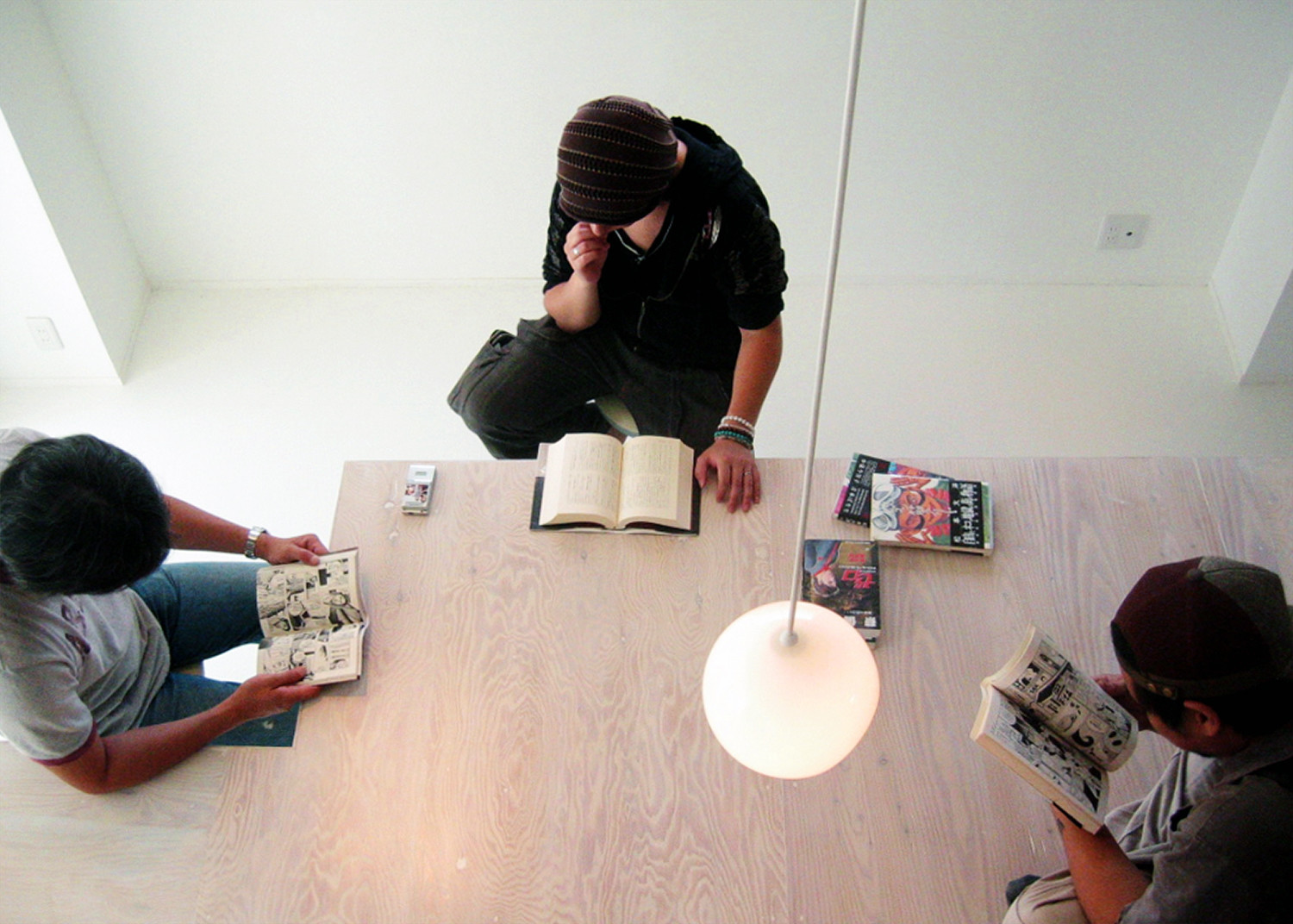
i table

 キャンバスに追加する写真を拡大する
キャンバスに追加する写真を拡大する キャンバスに追加する写真を拡大する
キャンバスに追加する写真を拡大する キャンバスに追加する写真を拡大する
キャンバスに追加する写真を拡大する キャンバスに追加する写真を拡大する
キャンバスに追加する写真を拡大する キャンバスに追加する写真を拡大する
キャンバスに追加する写真を拡大する
家族構成の変化に応じたLDKの計画である。
主人の多趣味に応えること、溢れるモノを整理すること、ホームパーティーに対応できることが求められた。
今までの使い方をみるとモノを整理するということを収納量の問題としてはとらえることが出来ず、むしろ使い方とか散らかし方の問題、そしてそれは空間の作り方の問題で
あるように思えた。今まで床に直置きされていた多くのモノを大きなテーブルの上に上げること、そしてそれにより動線を明確化することによって、散らかっていたモノが空間
の質を作る要素となるように計画した。テーブルに切り欠きを入れることで、ご飯を食べるときはキッチン周りに小さくまとまり、一人になりたいときは部屋にこもるのではなく
テーブルの端に(もしくは下に)居場所をつくるというように、家族間の関係を選択できる幅を広げた。 テーブルという上部を解放した物理的障害により一体的なワンルームの
開放感と居場所を選択し作る自由さを同在させた、家族やコミュニティーの在り方をサスティナブルなものとする大きなテーブルの提案である。
またテーブルの下を出来る限り収納とすることで収納量の問題も同時に解決している。
This layout featuring a one-room living room, dining room, and kitchen was designed to fit the changing needs of a family.
For example, the husband had many hobbies, and required storage area for his many possessions and space to throw parties. When visiting the house, the architect realized
that storage space wasn't the issue, but that the owner needed a set location to place all the objects for his various hobbies in a way that would look more orderly.
By placing the majority of the objects he had on the floor on an expansive table with ample storage space underneath, the flow of the room was altered, changing the disorganization
into a stylish element of the room. Although having a table installed into the house may be viewed as an obstacle by some, the inclusion of one creates a feeling of openness and
connects the different sections of the room to create one, fluid room, facilitating conversation among the family.
By adding parts to the table that can be removed, the family can intimately eat their dinner around the table in the kitchen. When somebody wants to be alone, instead of shutting
oneself in one's room, one can sit at the one of the ends of the table (or underneath it), allowing family members their own space while keeping them tight-knit.

- お名前
- メールアドレス
- ご住所-
- 建築予定地
- 希望の予算万円〜万円
- 完成希望時期
- 同居する家族構成
資料請求にあたっての注意事項
- 当社は,当社のプライバシーポリシーに則って,いただいた情報を利用します。
- 当社はお客様からいただいた個人情報を,お客様が指定された専門家へ提供すること、または当社サービスのご案内のために利用します。
- 当社は、本サービス又は利用契約に関し,お客様に発生した損害について、債務不履行責任、不法行為責任、その他の法律上の請求原因の如何を問わず賠償の責任を負わないものとします。
- 当社は、お客様が本サービスを利用することにより第三者との間で生じた紛争等について一切責任を負わないものとします。
